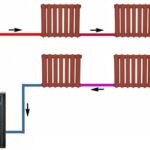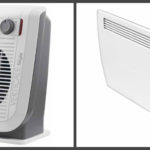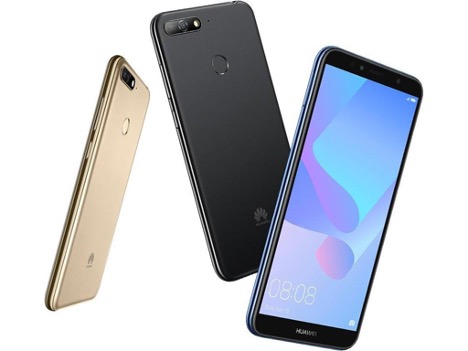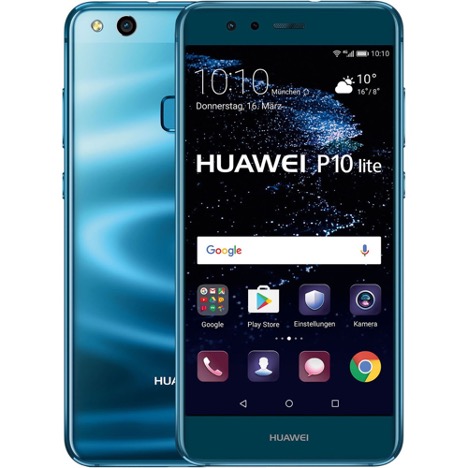Pros and cons of solar panels: what you need to know before installation
Both in the world and in Russia, solar panels are becoming increasingly popular. These are semiconductor photocells that absorb sunlight and convert the resulting energy into electricity. If you install several of these batteries, their performance will be sufficient to meet the needs of the entire private home. The article describes the pros and cons of solar energy, technical characteristics and types of batteries.
The content of the article
Design and principle of operation
Before considering the pros and cons of solar panels, you need to understand their structure and operating principle. The main equipment of this type is cells with photocells. They are attached to the frame, on top there is glass and protective coatings made of polymers (top and bottom - EVA and PVC). The basis is the rear wall, and even lower there is a contact box and a bracket with which the element is installed on the roof or in another place.
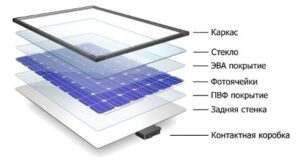
The main part of a solar battery is a photocell. This is the name given to a thin panel made of semiconductor material – silicon, laid in 2 layers. Other materials can be used instead:
- amorphous silicon is inexpensive, but its efficiency is the lowest among all semiconductors: efficiency is no more than 8%;
- cadmium telluride is expensive, but has a high efficiency of 11%;
- CIGS is an alloy of gallium, indium, selenium and copper with an efficiency of 15%.
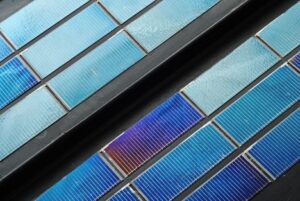
As you can see, the disadvantages of solar panels are associated with low efficiency, that is, with rather low efficiency. But we should not forget that energy is produced for free and in virtually unlimited quantities. The operating principle is quite simple:
- The sun's rays fall on the surface of the photocell.
- As a result of heating, that is, the absorption of energy, it releases electrons.
- Under the influence of an electric field, they begin to move in an orderly manner, that is, an electric current is created.
- With the help of an inverter, direct current is immediately converted into alternating current, which is required to power equipment and household appliances (this is what is used in sockets).
- The current enters the network and is used for its intended purpose.
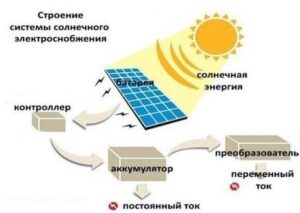
Pros and cons of solar panels
It is clear that solar energy has its pros and cons. The advantages of such battery cells are obvious:
- the possibility of receiving free electricity in unlimited quantities;
- silent operation;
- fairly simple installation and maintenance;
- long service life;
- does not take up much space - moreover, batteries are placed on roofs, the space of which is not used;
- 100% environmentally safe - no harmful emissions or waste.
But there are also obvious disadvantages of solar power plants:
- the equipment is quite expensive;
- installation will also be expensive;
- the amount of energy strongly depends on the climatic characteristics of the region, that is, the number and duration of sunny days;
- To produce really a lot of electricity, you need to install several elements over a large area, and this is not always possible.
Main characteristics and types of batteries
Thus, there are pros and cons to solar energy.But in order to choose a suitable photocell, you will also need to familiarize yourself with the main characteristics:
- In practice, the most important criterion is power. If you plan to use a battery to generate energy for the whole house, you need to consider devices with a rating of 1000 W or more. Most often, elements are used only for certain purposes, for example, for household appliances. Then you can purchase an inexpensive battery with a power of 500-600 W.
- Efficiency or specific efficiency – optimally from 15%.
- Tolerance – deviation from the declared power in both directions (for example, up to 3 W).
- The operating temperature range is usually from -45 to +90 degrees.
- LID degradation level is the rate of loss of properties of photocells due to wear. For example, after 30 years, battery performance may drop by 15-20%, which is normal.
- Sensitivity to light intensity - it is best to choose batteries with monocrystalline elements.
- The protective coating must be of high-quality material, for example, EVA or PET film.
It is also useful to know the classification of solar cells depending on the structure of the photocell (semiconductor):
- Polycrystalline - consist of small silicon crystals, the efficiency of which is in the range of 13-17%.
- Monocrystalline - efficiency reaches 20% or more.
- Amorphous - elements with a bendable surface, but insufficiently high efficiency (up to 11%).
- There are also film materials based on cadmium telluride or copper selenide. They also bend well and are lightweight. Efficiency is up to 12%.
Using solar panels is quite profitable. And not only in the south, but also in the north. The main condition is not the temperature, but the number of sunny days.In this sense, it is most profitable to use such a source of electricity in cities such as Khabarovsk, Omsk, Astrakhan. Before purchasing, it is important to accurately calculate the required power based on your goals and consumption volumes.

